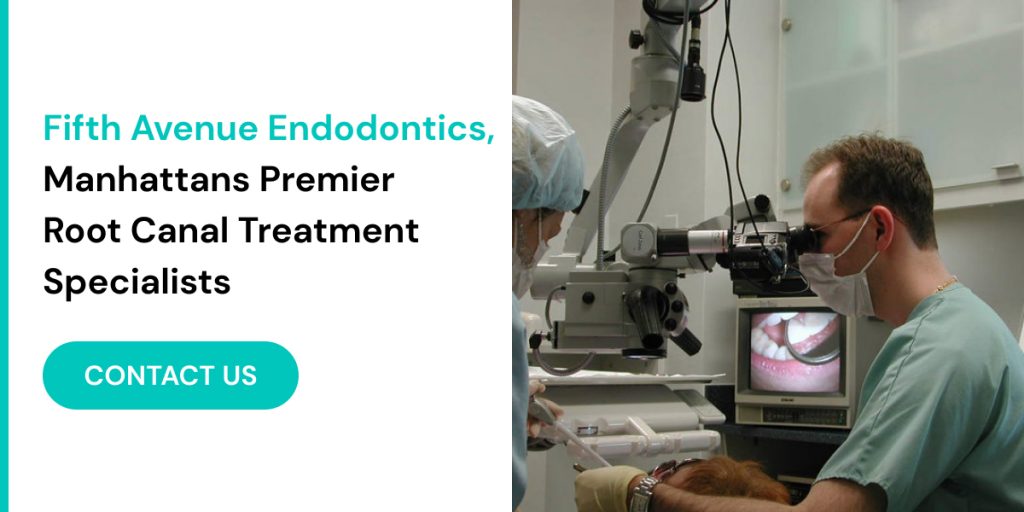When seeking an endodontist near me NYC, it’s essential to recognize the wide range of dental conditions that may require specialized care. One such condition is dens invaginatus, a rare but complex dental anomaly. Dens invaginatus, often referred to as “tooth within a tooth,” is characterized by an inward-folding of enamel and dentin, creating a sac-like structure within the tooth. This anomaly is particularly challenging due to its irregular internal anatomy, which complicates traditional root canal procedures. The intricate nature of dens invaginatus requires an endodontist with specialized skills and advanced tools to navigate and treat effectively.
The condition can lead to various complications, including infections and difficulties in cleaning and sealing the root canals. Therefore, expert endodontic care is crucial for successful treatment outcomes. In this blog post, we will explore the role of endodontics in addressing dens invaginatus, emphasizing the specialized techniques and knowledge required. Practices like Fifth Avenue Endodontics excel in managing such complex cases, leveraging their expertise and cutting-edge technology to deliver effective treatments. Understanding these aspects will help patients make informed decisions when seeking treatment for dens invaginatus.
What is Dens Invaginatus?
Dens invaginatus, frequently called “tooth within a tooth,” is a fascinating and complex developmental anomaly. This condition occurs when a portion of the tooth’s enamel and dentin folds inward during tooth development, forming a sac-like structure within the tooth. This inward folding creates a cavity or pouch that is surrounded by the normal tooth structure. Dens invaginatus is a rare condition but is of significant concern for both patients and dental professionals due to its potential complications.
The anomaly most commonly affects the permanent dentition, particularly the incisors. Its prevalence varies, but it is often seen in the maxillary incisors. The extent of the invagination can vary widely—from a small, shallow indentation to a deep, complex cavity that extends into the root of the tooth. The severity of the condition plays a crucial role in determining the treatment approach.
Dens invaginatus can significantly complicate root canal treatment. The unique internal anatomy created by the invagination makes it challenging for endodontists to clean and shape the root canals effectively. The sac-like structure can harbor bacteria, leading to infections that are difficult to treat with conventional methods. Additionally, the irregular anatomy can complicate the sealing of the root canal system, increasing the risk of future complications.
Diagnosis of dens invaginatus often involves advanced imaging techniques such as digital radiography and 3D cone beam computed tomography (CBCT). These tools provide detailed views of the tooth’s internal structure, helping endodontists plan and execute a precise treatment strategy. Managing dens invaginatus requires a thorough understanding of its complexities and a high level of expertise to ensure successful outcomes.

How Dens Invaginatus Affects Endodontic Treatment
When seeking an endodontist near me NYC to manage dens invaginatus, understanding the impact of this condition on root canal therapy is crucial. Dens invaginatus, with its inward-folding structure, creates a highly complex internal environment that poses significant challenges for effective endodontic treatment.
The primary concern with dens invaginatus is the unique and intricate anatomy of the affected tooth. The invagination forms a sac-like cavity within the tooth, which can trap bacteria and debris. This creates an ideal environment for bacterial growth, leading to persistent infections that are difficult to manage with standard root canal procedures. The bacteria trapped within the invagination can cause chronic inflammation or abscesses, complicating the treatment and potentially leading to tooth loss if not addressed properly.
Additionally, the altered anatomy of the tooth due to dens invaginatus makes cleaning and shaping the root canals more challenging. Traditional root canal instruments may not be sufficient to navigate the complex pathways created by the invagination. Specialized techniques and tools are often required to thoroughly clean and disinfect the entire canal system. The presence of the invagination can also make it difficult to access all parts of the root canal, leaving some areas untreated and potentially leading to future complications.
Sealing the root canal system in the presence of dens invaginatus is another critical challenge. The irregularities and additional spaces created by the invagination can complicate the filling process, increasing the risk of incomplete sealing and subsequent infection. Effective endodontic treatment requires advanced techniques and precision to ensure that all parts of the canal system are adequately cleaned, shaped, and sealed.
In summary, managing dens invaginatus requires a deep understanding of its effects on root canal therapy. Patients must seek out experienced endodontists, like those at Fifth Avenue Endodontics, who possess the expertise and advanced technology needed to address these complex cases effectively.
Diagnostic Techniques
Accurate diagnosis is a cornerstone of effective treatment for dens invaginatus. This complex dental anomaly requires a thorough evaluation to understand its extent and intricacies. Advanced imaging techniques play a pivotal role in this diagnostic process, providing detailed insights that are crucial for successful management.
- Digital Radiography is one of the fundamental tools used in diagnosing dens invaginatus. Unlike traditional X-rays, digital radiography produces high-resolution images that can be easily enhanced and manipulated to reveal finer details of the tooth’s internal structure. These images help endodontists visualize the invagination and assess how deeply it penetrates into the tooth. This information is essential for planning the root canal treatment and understanding the potential challenges involved.
- 3D Cone Beam Computed Tomography (CBCT) offers an even more detailed view of the tooth’s anatomy. CBCT scans provide three-dimensional images, allowing endodontists to examine the tooth from multiple angles. This technology enables the visualization of complex root canal systems and the full extent of the invagination, which may not be fully apparent on traditional two-dimensional X-rays. The 3D images can highlight variations in canal anatomy, the depth of the invagination, and any potential areas of infection or complications.
The combination of digital radiography and CBCT ensures a comprehensive assessment of dens invaginatus. These diagnostic tools allow for precise treatment planning by mapping out the tooth’s internal structure in great detail. Understanding the exact nature of the invagination and its impact on the root canal system is critical for selecting the appropriate techniques and instruments for effective treatment.
In summary, advanced imaging techniques are indispensable in the diagnosis of dens invaginatus. By providing detailed and accurate views of the tooth’s internal anatomy, digital radiography and CBCT facilitate informed decision-making and tailored treatment plans, ultimately improving the chances of a successful outcome.
Endodontic Treatment for Dens Invaginatus
At Fifth Avenue Endodontics, the approach to treating dens invaginatus is both methodical and meticulous, guided by the expertise of Dr. Iofin. This complex condition requires a comprehensive and carefully executed treatment plan to address the unique challenges posed by the inward-folded structure of the tooth. Here’s a detailed overview of the steps involved in managing dens invaginatus:
- Assessment and Diagnosis: The first critical step in treating dens invaginatus is a thorough assessment. Dr. Iofin utilizes advanced imaging techniques, such as digital radiography and 3D cone beam computed tomography (CBCT), to gain a detailed understanding of the tooth’s internal anatomy. These imaging tools provide a clear view of the invagination’s depth and complexity, allowing for precise treatment planning. The information gathered helps in tailoring the approach to fit the specific needs of the patient and the tooth.
- Cleaning and Shaping: Cleaning and shaping the root canals in a tooth affected by dens invaginatus is a delicate process. Specialized endodontic instruments are used to navigate the complex internal structure. This involves removing any debris, bacteria, and infected tissue from the intricate canal system. The goal is to ensure that all parts of the canal are accessible and thoroughly cleaned. Given the abnormal anatomy, this step requires precision and expertise to prevent any areas from being missed.
- Disinfection: Effective disinfection is essential to eliminate all bacteria from the cleaned canals. Dr. Iofin employs advanced disinfection techniques to ensure that the entire canal system is free of microbial contamination. This step is crucial in preventing future infections and promoting healing. Adequate disinfection minimizes the risk of reinfection and contributes to the overall success of the treatment.
- Filling and Sealing: Once the canals have been cleaned and disinfected, they are filled with a biocompatible material. This material seals the canals to prevent any bacteria from re-entering the tooth. Proper sealing is vital to protect the tooth from future infections and to ensure long-term stability. The final step involves carefully restoring the tooth to its normal function and appearance.
In summary, the endodontic treatment for dens invaginatus at Fifth Avenue Endodontics involves a comprehensive approach that addresses each aspect of the condition with precision and care. From initial diagnosis to final sealing, every step is performed with expertise to ensure successful outcomes and maintain optimal dental health.
Challenges in Treating Dens Invaginatus
Treating dens invaginatus presents several significant challenges that demand a high level of expertise and precision. This rare dental anomaly, characterized by an inward-folding of tooth enamel and dentin, creates a highly complex internal structure that complicates endodontic treatment in various ways.
One of the primary challenges is navigating the intricate internal anatomy of the affected tooth. The invagination creates a labyrinthine system of canals and chambers that can be difficult to access and thoroughly clean. The irregular pathways and hidden spaces within the tooth require specialized instruments and techniques to ensure that all areas are reached. Failure to adequately clean and disinfect these intricate canals can lead to persistent infections or treatment failure.
Another challenge arises from the variability in the presentation of dens invaginatus. No two cases are identical; the extent and configuration of the invagination can differ widely among patients. This variability means that a standardized approach is insufficient. Each case requires a tailored treatment plan based on the specific anatomy of the affected tooth. Endodontists must adapt their techniques and tools to accommodate these differences, making the treatment process more complex and demanding.
Moreover, the presence of dens invaginatus often complicates the sealing process. Proper sealing is crucial to prevent future bacterial invasion and ensure the long-term success of the treatment. However, the irregularities created by the invagination can make it challenging to achieve a complete and effective seal. Incomplete sealing can leave the tooth vulnerable to reinfection and necessitate additional procedures.
In summary, treating dens invaginatus requires a combination of advanced skills, specialized equipment, and a flexible approach. Endodontists must navigate the complex internal anatomy, adapt to the variability of each case, and ensure meticulous cleaning, disinfection, and sealing. The expertise required to address these challenges highlights the importance of seeking care from experienced professionals who can provide the high level of precision needed for successful treatment.

Why Expertise Matters
Choosing an experienced endodontist near me NYC is crucial for managing such complex cases. Dr. Iofin at Fifth Avenue Endodontics is renowned for his proficiency in handling intricate endodontic cases, including dens invaginatus. His extensive experience ensures that patients receive the best possible care and outcomes.
Conclusion
Dens invaginatus is a challenging condition that necessitates advanced endodontic treatment. When searching for an endodontist near me NYC, consider the expertise and experience required to manage such complex cases. At Fifth Avenue Endodontics, Dr. Iofin and his team offer the specialized care needed to address dens invaginatus effectively. By understanding the role of endodontics in treating this anomaly, patients can make informed decisions and achieve optimal dental health outcomes.
If you suspect you have dens invaginatus or are experiencing dental issues that might be related, consulting with a skilled endodontist is essential. Contact Fifth Avenue Endodontics to schedule a consultation and explore your treatment options.
This comprehensive guide should provide valuable insights into the role of endodontics in treating dens invaginatus and help you make informed decisions about your dental care.

